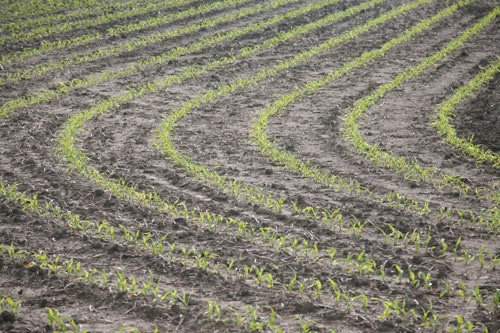May 9, 2011

Urbana, IL - Growers applying anhydrous ammonia in wet soils this spring may encounter problems. The ideal soil condition for ammonia application is 15 to 20% moisture. If soils are wetter, the applicator’s knife track may not seal properly allowing ammonia to escape, according to the University of Illinois Extension.
Growers can check to see if moisture levels are ideal by feeling the soil. For example, a silty, clay loam will feel slightly moist, reports Fabian Fernandez, University of Illinois Extension specialist in soil fertility and plant nutrition. “If pressed in the palm of your hands, it will form a weak ball with rough surfaces that crumble under pressure,” he says. “It will not leave water stains on your hands.”
When soils are slightly above or below the ideal moisture conditions, increasing application depth can reduce the risk of ammonia loss, Fernandez said. An adequate application depth under ideal moisture conditions is approximately 6 in. for fine-textured soils and 8 in. for coarser-textured soils or sandy soils.
For wet soils, increasing the application depth is not always sufficient to minimize ammonia losses, Fernandez says. He recommends using some type of device behind the knife to close the slot created by the knife.
“The best test to determine if a proper seal is obtained is to go back to the application zone and smell,” he says. “If ammonia can be smelled for a while after the application, that’s clear evidence that ammonia losses are occurring.”
For answers to frequently asked questions about anhydrous ammonia, read the April 29 edition of The Bulletin, published by the University of Illinois Extension.
You May Also Like




